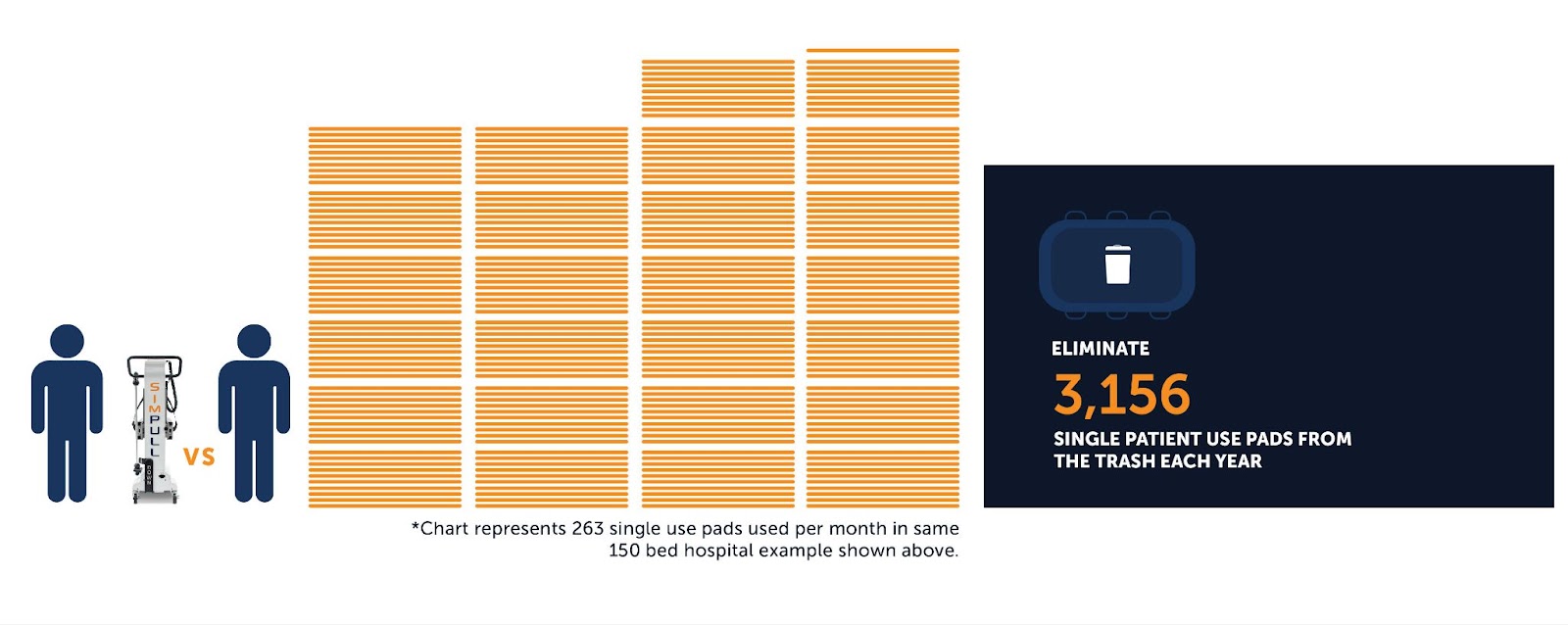Menu

November 18, 2025
for clinicians
Current patient transfer processes can often be wasteful, as well as cause injury to both patients and staff members. Our team is passionate about diving into the issues involved in current patient transfer processes and providing meaningful solutions.

Our healthcare system isn’t set up to be eco conscious - at least, not yet. Modern healthcare is designed first and foremost to save lives, prevent infections, and ensure patient safety. These priorities, while absolutely vital, have at times compromised sustainability and led to systems and processes that generate large amounts of waste and consume significant energy.
The result? A system that excels in clinical care but lags behind in environmental responsibility - not because healthcare professionals don’t care, but because the system wasn’t designed with sustainability in mind. However, sustainability is a growing concern across all industries, and healthcare should not be neglected.
Achieving eco-conscious healthcare won’t happen overnight, and sweeping changes can be challenging to implement. The most effective path forward is to start small, introducing protocols and products gradually, in ways that deliver clear benefits for staff, patients, and facilities alike. One area that can be improved upon is patient transfer. Current patient transfer processes can often be wasteful, as well as cause injury to both patients and staff members. Our team is passionate about diving into the issues involved in current patient transfer processes and providing meaningful solutions.
The healthcare system’s standard forms of patient transfer are often heavily wasteful. While each individual patient transfer may seem like a small event, the cumulative waste from these processes can be substantial, especially in busy healthcare settings where hundreds of transfers occur daily. Disposable slide sheets, single-use slings, and excessive packaging all contribute to landfill waste and, in some cases, require incineration, releasing harmful emissions into the atmosphere. Even seemingly minor waste, like contaminated wipes or single-use covers, add up quickly when multiplied by the volume of care provided.
By recognizing patient transfer as a meaningful contributor to healthcare waste, facilities can identify opportunities to replace disposables with eco conscious healthcare solutions.
Current manual and product-assisted transfer processes led our team to question if today’s healthcare system truly has the best approach to patient transfer. Between waste, injury, and patient dissatisfaction, common patient transfer methods have hidden costs that often seem to outweigh the benefits.
We were driven to create the SimPull as a result. Designed to reduce the strain caused by typical patient transfer methods, the SimPull is a fully automated product capable of performing lateral transfers, supine-to-sitting transfers, and boosting. With zero force or lift required, nurses and healthcare facility staff greatly benefit from the lack of physical strain required.

Here’s how the SimPull works when completing a lateral patient transfer:
During the process, no waste is generated. In a 150 bed hospital, the facility would see a significant reduction in medical waste from patient transfers with the SimPull transfer device - eliminating 3,156 single use patient pads from the trash each year.

Empowering healthcare facilities to embrace eco conscious healthcare practices hinges on providing options that are mutually beneficial and address real issues felt by staff, patients, and management alike. The SimPull creates a patient transfer process that not only eliminates waste, but minimizes likelihood of patient and staff injury.
Reach out to us to learn how the SimPull can help your healthcare facility advance its sustainability goals.